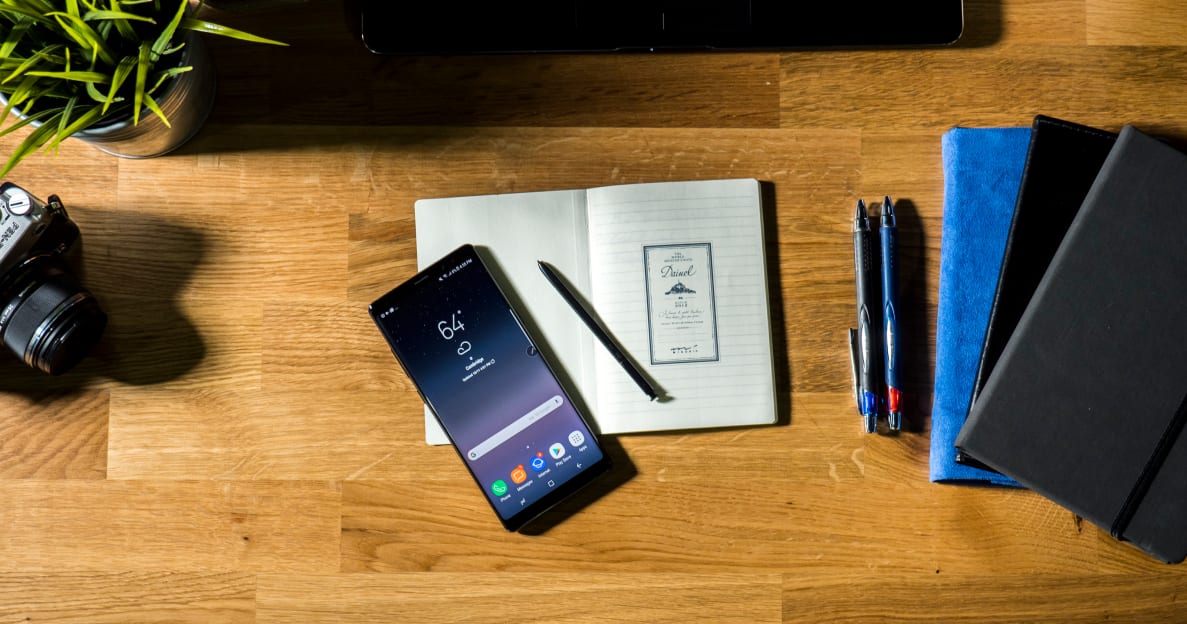Pros
-
Top-of-the-line camera
-
Fun, intuitive stylus
-
Outstanding performance
Cons
-
Poor fingerprint-scanner placement
-
Useless virtual assistant
This year, all eyes were on the Galaxy Note 8 (available at Amazon) , a phone with one objective: don't explode.
Because if it didn’t explode, it would surely do what just about every previous Galaxy Note did before it: set the gold standard for performance in extra large smartphones. After all, Samsung spares no expense with its flagships, and the company has a habit of making pointed, finely-tuned improvements on each of them year after year.
I can say with confidence that both of these things are true: The Note 8 doesn't explode, and it’s every bit as dazzling as I expected it to be.
It isn’t perfect, however—the fingerprint scanner is woefully misplaced, the dedicated Bixby button is a dead-end design element, and the price tag might give you a case of the vapors.
But whether you’re a Note fanatic who was sad to see the Note 7 die a premature death or you’re just finally ready to commit to a big phone lifestyle, the Note 8 is a resounding success in nearly every way.
About the Galaxy Note 8
The Note 8 is similar to the Galaxy S8 and Galaxy S8+ in many ways, though the differences are worth noting: The Note 8’s 6GB of RAM comes standard in every variation (regardless of storage) and the Note 8 is the only Samsung flagship with dual cameras.
Here’s the US version of Note 8 at a glance:
{{ amazon name="Samsung Galaxy Note 8(Midnight Black)", asin="B07536MYBQ", align="right" }}
• Qualcomm MSM8998 Snapdragon 835 octa-core processor (2.35GHz, 1.9GHz) • 6GB RAM • 64GB internal storage, up to 256GB of expanded storage via microSD • 6.3-inch quad-HD (2960x1440) edge-to-edge AMOLED display • Dual 12MP cameras (26mm f/1.7 and 52mm f/2.4) with OIS, phase detection autofocus, LED flash, 2x optical zoom, 4K video (30FPS), 1080p video (60FPS), and 720p video (240FPS) • 8MP f/1.7 front-facing camera with autofocus • IP68-rated water resistance for up to thirty minutes in 1.5 meters of underwater submersion • 4G LTE, WiFi, AC/Bluetooth (5.0), and NFC support (with Samsung Pay) • 3,300mAh non-removable, lithium-ion battery with both fast- and wireless charging support • USB Type-C port • Fingerprint, iris, and biometric (heart rate) scanner • 3.5mm headphone jack
The centerpiece of the Note 8 is Samsung’s S Pen stylus—a fan-favorite feature that sets the Note lineup apart from every other phone on the market.
Much like its closest competitor, the iPhone 8 Plus, the Note 8 is equipped with dual rear cameras—a first for the Note lineup.
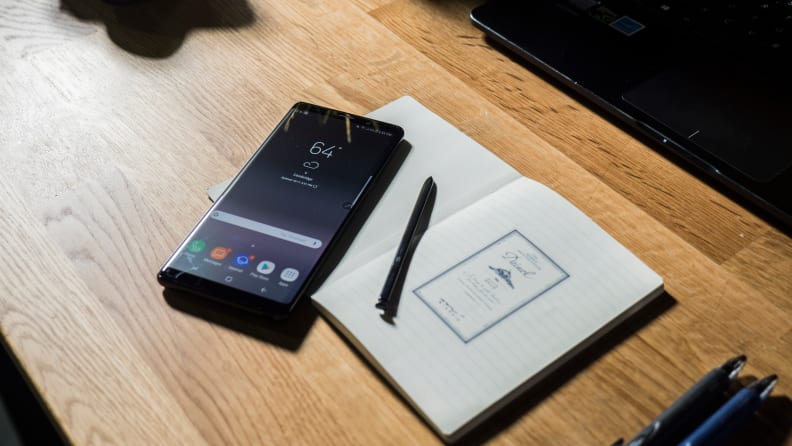
The Galaxy Note 8 is a premium smartphone, through-and-through.
What we like about the Note 8
Excellent performance, excellent battery life With 6GB of RAM and a high-octane processor, it’s no surprise that, purely based on benchmark test results, the Note 8 is one of the best-performing smartphones we’ve ever used. In practice, the Note 8 follows through, delivering the type of speed and fluidity we’ve come to expect from the Samsung Android experience.
Champions of stock Android will likely still feel underwhelmed by Samsung’s busy TouchWiz UI, but the Note 8’s software and hardware harmonize well enough to run circles around its Android-based contemporaries.
Our battery test clocked the Note 8 at roughly nine and a half hours of intense use with the display on. This translates to over a full day of normal use, and bests the Galaxy S8's battery test by a hair.
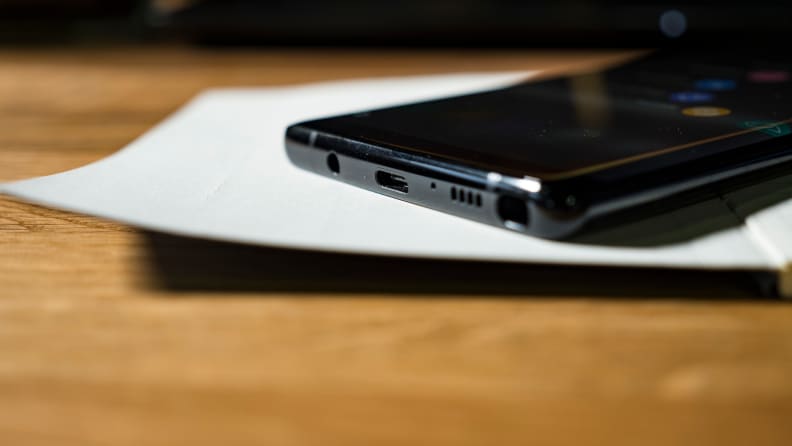
Fortunately, the Note 8 is equipped with a 3.5mm headphone jack. Remember those?
A class-leading camera with flexible features The Note 8 is the first Samsung flagship to jump on the dual-camera bandwagon, and it takes advantage of this feature better than any smartphone other than the iPhone 8 Plus (which it bumps elbows with atop the first place podium).
The two 12-megapixel sensors combine images in a way that lets you adjust focus both before and after a shot is taken, which can lead to some lovely looking, portrait-style photos. And although the Note 8’s camera software doesn’t offer as many features as the iPhone 8 Plus, I found that the Note 8 was better at identifying subjects and bringing them into focus cleanly.
{{ photo_gallery name="Samsung Galaxy Note 8 Sample Photos" fullscreen="true" }}
On both the 8 Plus and the Note 8, the feature isn’t perfect. The software still has difficulty defining the lines around hair, fur, puppy ears, puppy tails, puppies… you get the idea. But it’s getting there.
Photos in general look damn good, though. In our lab tests, we measured near-perfect color reproduction in well-lit environments. Samsung’s image processing software creates a glossier, more-saturated look than similar shots from an iPhone, but the effect isn’t aggressive enough to notice without a reference point.
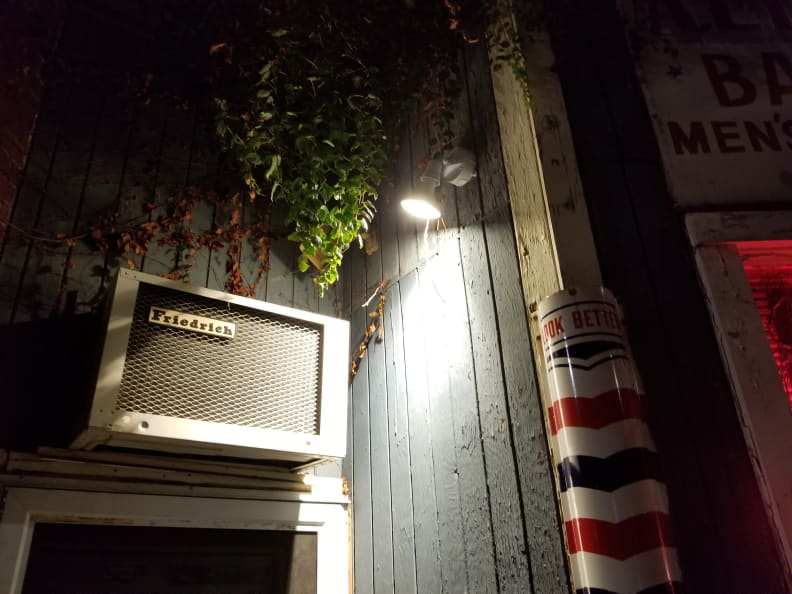
The dual cameras on the Samsung Galaxy Note 8 handle low-light conditions wonderfully.
This, combined with the camera’s impressive dynamic range, is why the Note 8 features what might be the best low-light smartphone camera to date. In fact, my favorite time of day to shoot with the Note 8 is shortly after dusk, when landscapes and subjects just seem to pop, especially with live focus in play.
The only major leg-up the iPhone 8 Plus has on the Note 8 is its ability to shoot 4K video in 60FPS; with the Note 8, 4K tops out at 30FPS. For most, however, I don’t suspect this’ll be a deal-breaker.
The S Pen is still a joy to use. For me, the saddest part about sending back our recalled Note 7 last year was losing my doodle buddy. I doodled on the Note 7 in front of the TV, I doodled on the Note 7 on the train, I doodled morning, afternoon, and night. It’s what makes a Note a Note, and I’m happy to report that it’s better than ever.
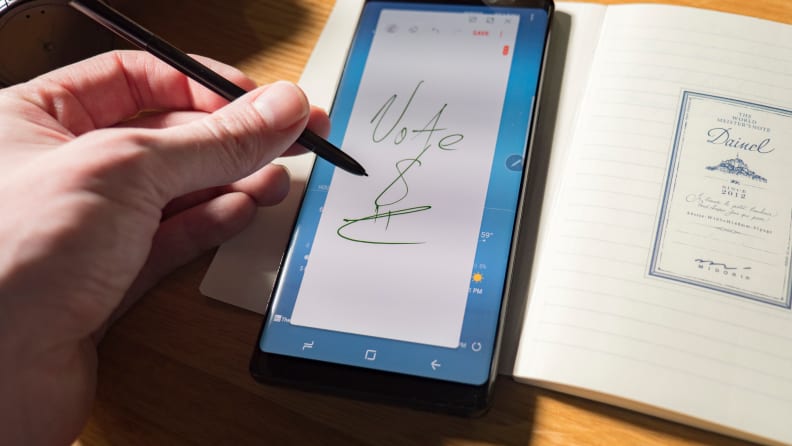
The Note 8 satisfies my need to doodle at all times.
The Note 8 and its stylus are more than just a doodle buddy, however—you can use the S Pen it to draft memos, to select text, to color digital coloring books, and to annoy your friends with animated, handwritten notes.
From a technical standpoint, the stylus is an impressive little gizmo, too—it’s got several thousand levels of pressure sensitivity, so if you choose to doodle with a “pencil,” for example, you can follow the same muscular intuition that you’d tap into if you were holding a real pencil.
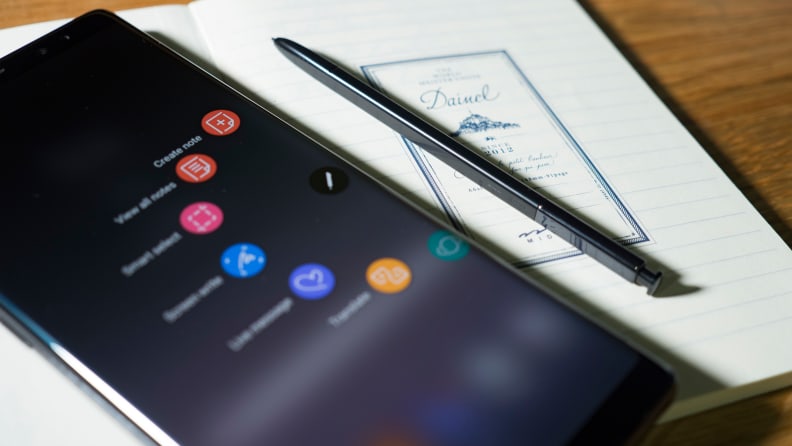
The S Pen offers a wide array of features, but I use it mainly for drafting memos.
By the way, if you happen to be a fidgeter, here’s a fair warning: The top of the S Pen clicks like a retractable pen. It’s both the best and worst thing.
What we don't like about the Note 8
Terrible fingerprint scanner placement One of my least favorite aspects of the Galaxy S8 (an otherwise excellent smartphone) is its dreadful fingerprint scanner. It’s more or less identical in form to the S8’s camera hump—and it sits directly next to it. Try though I did to get used to the placement, my S8’s camera hump was in a perpetual state of smudge.
On the Note 8, the fingerprint scanner is once again delegated to the back—right next to the dual cameras.
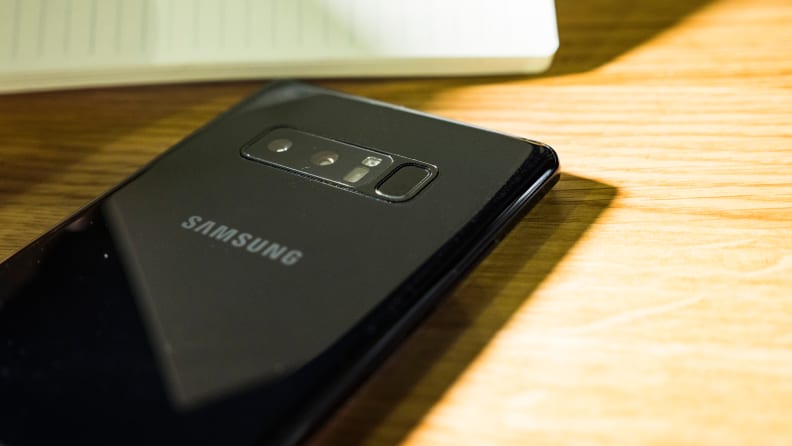
The fingerprint scanner is dreadfully misplaced—be prepared to smudge your camera trying to activate it.
I don’t get it. I’m not sure how this design choice continues to win out, but I have to assume that there’s a better option here, for both the shape of the scanner as well as its placement.
Like its predecessor, the Note 8 offers iris scanning as a primary security measure, and while its speed and proficiency impressed me, I can’t say I’m going to be using it anytime soon; a basic passcode is fine for me, and just as fast.
The dedicated Bixby button is a total airball. When Samsung's personal assistant Bixby first debuted on the Galaxy S8, the lack of practical applications for the software (as well as its spotty performance) made Samsung’s investment in it seem foolhardy.
These days, it’s is pretty much the same shrug-inducing feature it always was. Bixby on the Note 8 is like the sequel we never asked for, and like the first go around, Bixby has a starring role right on the side of your freakin’ phone.
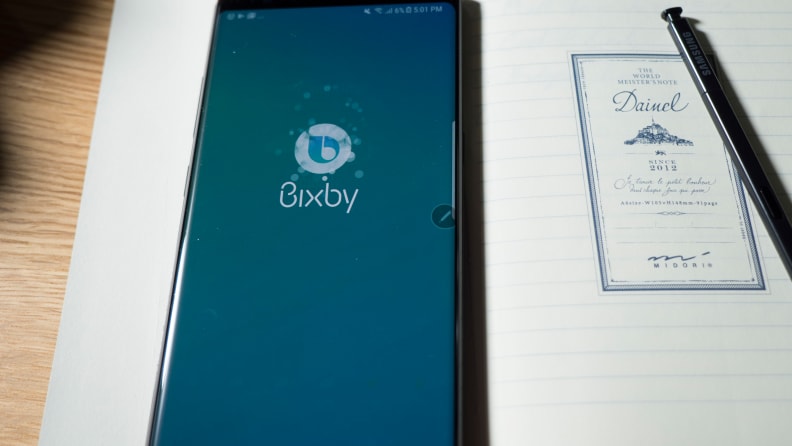
Bixby is every bit as disappointing as it was in its debut on the Galaxy S8.
Here’s what’ll probably happen: You’ll use the Bixby button deliberately once, then annoyingly use it again and again by accident, and eventually opt to disable the button altogether.
And there your Bixby button will sit: on the side of your phone, sad and neutered of all its purpose, a failure of design.
The price is a prohibiting factor for a majority of shoppers. I know that pointing out the steep price tag of what very well might be the most premium smartphone on the market is a little, uh, duh, but it’s worth noting that the Note 8’s cost—around $930—is enough to freeze most people out of the potential buyers club.
And look—the Note 8 is one of the best smartphones money can buy. I understand the supply chain. But most people will see the asking price and walk right by it. Which brings me to my final verdict.
Should you buy it?
Yes, but only if you can justify the cost.
If you want a top-of-the-line, waterproof Android phone, start by looking at the Galaxy S8, Galaxy S8+, and the Note 8.
If you want a big, phablet-sized screen, the S8+ and the Note 8 are the way to go.
If you want either a stylus to go with your big screen, the flexibility of dual cameras, or all of the above, the Note 8 is worth the asking price.
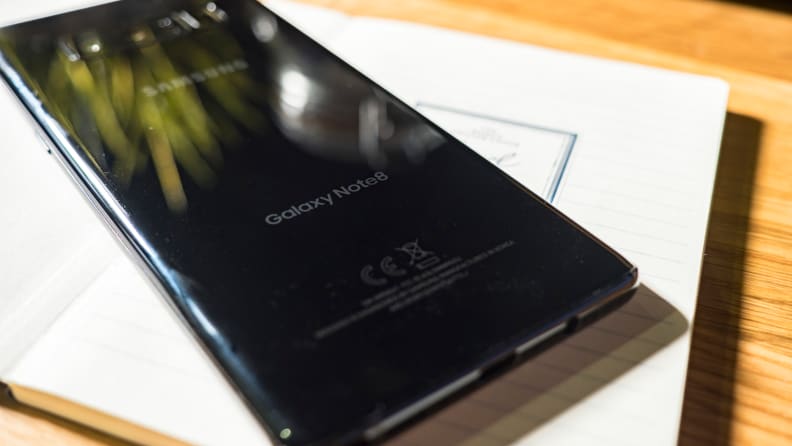
If the dual cameras and stylus are worthy of the extra $100-$200 in your mind, the Note 8 will treat you better than the Galaxy S8.
Because here’s the thing: If you remove the Note 8’s S Pen and dual-camera set-up, all three of Samsung’s 2017 flagships perform at more or less the same level. Which means the Note 8’s stylus functionality and enhanced camera software are the only two features that set the Note 8 apart from its smartphone siblings.
Put it this way: You can buy an unlocked, 64GB Galaxy S8 for $725, an unlocked, 64GB Galaxy S8+ for $825, or a 64GB Galaxy Note 8 for around $930.
If you think the Note 8’s S Pen and dual cameras are worth an extra $100-$200, then by all means, go nuts—it’s one of the best smartphones you’ll ever use. If not, stick with the S8.
Related Video
{{ brightcove '5577595313001' }}
Meet the tester
Michael Desjardin graduated from Emerson College after having studied media production and screenwriting. He specializes in tech for Reviewed, but also loves film criticism, weird ambient music, cooking, and food in general.
Checking our work.
Our team is here to help you buy the best stuff and love what you own. Our writers, editors, and experts obsess over the products we cover to make sure you're confident and satisfied. Have a different opinion about something we recommend? Email us and we'll compare notes.
Shoot us an email

